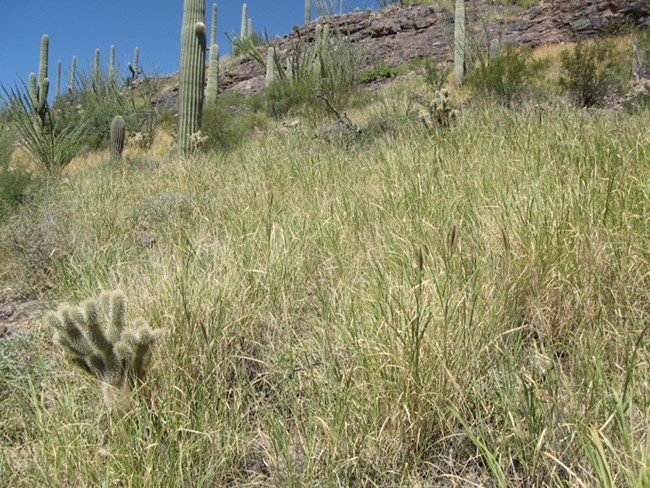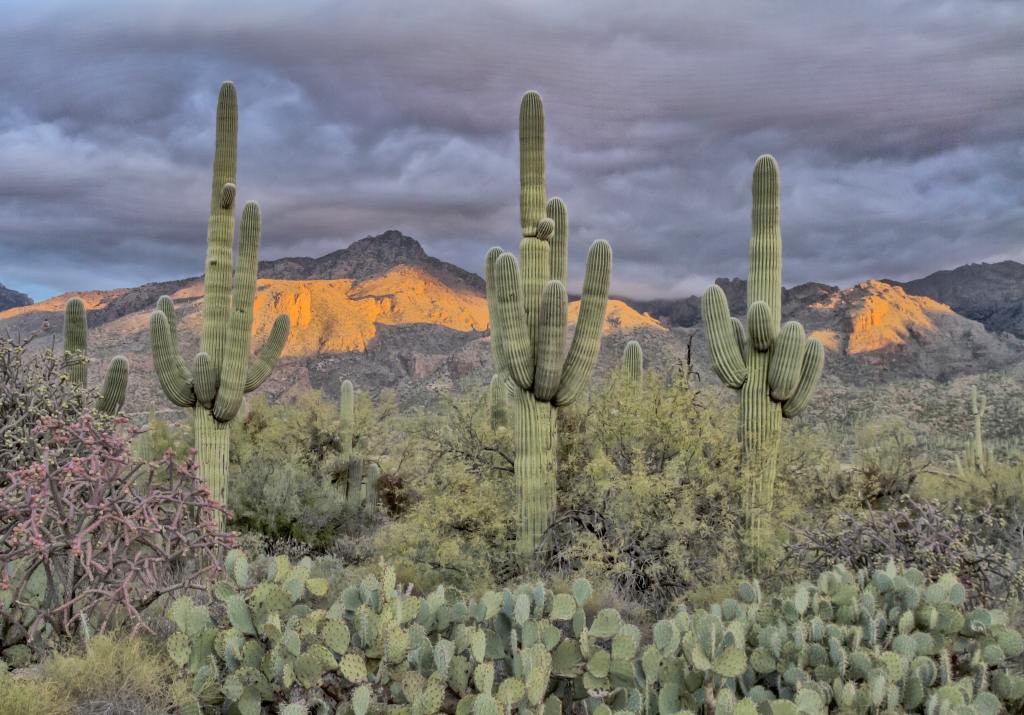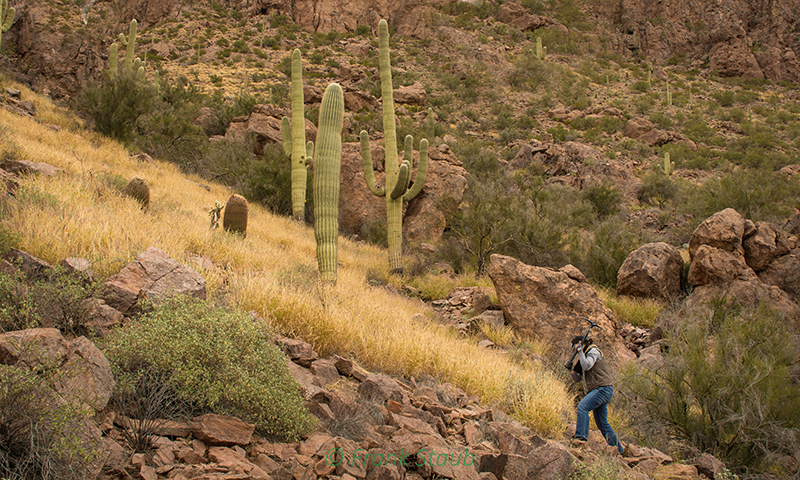The Story of Rancho la Inmaculada
We’ve got buffelgrass top of mind during Save Our Saguaros Month! We would normally be gathering large groups of volunteers to help beat back this invasive grass. This year we are taking a different approach in light of the continuing COVID-19 pandemic, and we’re asking our community to participate in the Buffelgrass Map-A-Thon (now extended through March 21st, 2021!), helping us to map buffelgrass where you live, work, and play.
Buffelgrass is a non-native grass that outcompetes native plants in the Sonoran Desert and introduces a fire cycle that spurs rapid buffelgrass proliferation into an environment that is ecologically fire intolerant. Fires are not a natural part of the Sonoran Desert ecology, but more frequent large, hot fires such as 2020’s Bighorn Fire give us a glimpse into a fiery future. Sadly, fires fueled by buffelgrass kill our magnificent saguaro cacti and threaten the survival of many native plants and animals such as the desert tortoise.

Buffelgrass and other non-native grasses like Lehman’s Lovegrass and Red Brome have the potential to transform our incredibly biodiverse desertscrub and thornscrub landscape (here in the Tucson region) into savanna or grasslands with drastically reduced overall biodiversity. Because of the major threat buffelgrass presents to the desert we love so much, you can often find us and our partners working to remove buffelgrass in places like Sentinel Peak, Tumamoc Hill, and the Catalina Mountains.
Overgrazing is another major problem that impacts the health of our desert environment. As biodiversity declines due to invasive species and livestock grazing, the web of life, once tightly woven, loosens. The desert becomes more vulnerable to disruptions such as droughts and floods. And in the era of climate change, these disruptions only become more severe and more common.

But sometimes problems can reveal solutions. This is one of the guiding principles of the regenerative movement, which centers a holistic understanding of nature to guide innovations in all aspects of human civilization from architecture and agriculture to conservation and business. This principle asks us to call upon our curiosity and design-thinking to integrate human activities within the environment as a fundamental part of nature, as opposed to separate from it.
Can we turn both grazing and invasive species into solutions? Iván Aquirre carried out an experiment on his regenerative ranch, Rancho la Inmaculada, which sits in the heartland of Sonora 50 miles south of Caborca, to find out. When Iván inherited the family ranch in the 1980s, decades of overgrazing left only barren land throughout this five-thousand-acre ranch. Iván’s father was one of the first few local ranchers that brought buffelgrass to the area, systematically planting it with the help of tractors and bulldozers. But even active seeding of buffelgrass could not meet the needs of hungry cattle when this land had seemingly lost its ability to regenerate life, and the ranch faced bankruptcy.
Iván was determined to bring life back to Rancho la Inmaculada, and found inspiration in the work of Allan Savory, the founder of the holistic land management framework. Growing up in Zimbabwe, Savory saw how breathtaking herds of wildebeests, buffalos, and zebras enhanced the health of African savannah. A large herd of grazers does not necessarily cause overgrazing as long as the herd moves over the landscape fast and stochastically (in a random pattern). The holistic land management framework applies this principle to range management by dividing a ranch into numerous paddocks, moving cattle from one paddock to the other frequently and systematically. Life is allowed to rest and regenerate in the grazed paddock in the following months to years.
Using this approach that mimics nature, Iván was able to increase plant cover over the land surface of Rancho la Inmaculada from ten percent to seventy-five percent in thirty years. The regrowth of grasses, shrubs, and trees brings quails, mule deer, and other wildlife back to the land. Buffelgrass becomes one of the many grass species that support the cattle and enrich the soil. Because of the intermittent and stochastic disruption of grazing, buffelgrass cannot dominate to become a fire hazard or overcrowd other plant species on a large scale.
The change in Rancho la Inmaculada shows how a regenerative approach can improve biodiversity and prevent fire threat in overgrazed and grassland areas of the Sonoran Desert.
However, it’s important to recognize this as only one solution among many for addressing the very serious threats of overgrazing and invasive species.
To this day, the biodiversity on his ranch cannot match that on a land saved from grazing to begin with. Regenerative ranching works well in a grassland ecosystem, and can be adopted in places where ranching is degrading the environment. However, large swaths of the Sonoran Desert are not grassland and will not respond well to large grazers, and thus require a different approach. For us at the Desert Museum, that means removing buffelgrass to allow native species to thrive.

Humans need to put others’ needs above our own, including the needs of the animals and plants with which we share this earth. “Earth care, people care, and fair share” is another central principle of the regenerative movement. This means considering alternative ways of coexisting with nature and reducing overall consumption, especially of energy- and water-intensive products like beef. Instead, we can work to integrate native sources of protein such as mesquite pods and palo verde beans into our diet. So even as ranchers can begin adopting regenerative techniques, we should also be removing (or reducing) ranching from non-grassland systems.
Save Our Saguaros Month is a call to arms to protect and preserve the desert’s beautiful biodiversity by removing invasive species like buffelgrass. Imagine the possibilities when we humans remain humble students of nature, working diligently to balance our needs with the needs of others to achieve ecological resilience and coexistence that is liberating to all life! That is our vision, and we hope you’ll join us by participating in the Buffelgrass Map-A-Thon or participating in a small-group buffelgrass pull.
Written by Max Li and Elena Makansi
Senora was probably made into desert by humans within the last 5.000 years.
LikeLike
Senora was probably made into desert by humans within the last 5000 years.
LikeLike